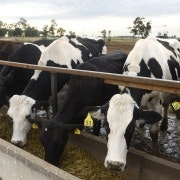For the major banks, it's all about Murray
There's been a curious sense of irrelevancy about the latest round of big bank results as the sector awaits the looming final report of the Murray inquiry into the financial system.
Despite a generally clean set of results and strong capital positions, the major banks rightly suspect that the inquiry is out to get them.
The Westpac result that was released today was solid, with 7 per cent growth in net income translating into 8 per cent growth in cash earnings, helped by yet another big (23 per cent) decrease in charges for bad and doubtful debts.
Despite the focus on the heat within the housing market, there are no discernible signs of stress within the banks' loan portfolios. In Westpac's case, not only did impairment charges fall by almost $200 million but all the indicators of credit quality improved.
The majors know that the Murray inquiry is likely to recommend -- and the federal government is likely to accept -- that they should hold more high-quality capital and that the floor under their risk-weightings of housing loans is likely to be raised, requiring them to hold more capital.
They are moving pre-emptively, with their common equity tier one capital ratios edging up. Westpac's actually edged down, slightly, as a result of last year's special dividend and the acquisition of some of Lloyds' Australian assets, but at 9 per cent it remains the most conservative among the majors.
The recognition that it will almost inevitably have to hold more capital than it might have felt necessary in the past appears to be reflected in a decision by Westpac to revise its preferred range for its common equity tier one capital position, from 8 to 8.5 per cent, to 8.75, and to 9.25 per cent.
ANZ's Mike Smith triggered a minor controversy last week when he said borrowers would pay the price for additional capital requirements imposed in response to the Murray inquiry, even though it was a statement of the obvious. In reality, the pain is likely to be shared by customers and shareholders.
Westpac lifted its return on equity by 48 basis points to 16.4 per cent -- ANZ's ROE was 15.4 per cent and NAB's Australasian ROE (its overall performance is disfigured by its UK exposures) was more than 17 per cent -- which suggests there is some scope for shaving returns to shareholders while maintaining very attractive returns on shareholder capital.
The precise apportionment of the additional costs that might flow from the Murray inquiry will inevitably depend on the intensity of competition within the system.
The system is quite competitive, with net interest margins continuing to narrow. Westpac lost about 6 basis points of net interest margin over the year, following a similar loss of margin the previous year, as it grew at or above the growth in the system in most of the key market segments.
The one quibble analysts appear to have with the Westpac result, which was built on a very strong result from its Australian financial services business and a solid institutional bank result, was that its cost-to-income ratio rose because the rate of growth in its expenses was greater than the rate of growth in revenue in the second half. At 42 per cent, however, the ratio is the lowest in the sector.
Westpac has in many respects the simplest strategy of any of the majors, focusing intensely on the domestic banking and wealth management markets with a (not so straightforward) strategy of increasing the extent of cross-selling to its existing customer base.
The metrics on cross-selling and customer satisfaction within the result would suggest that Gail Kelly and her team are continuing to make progress on that front.
















